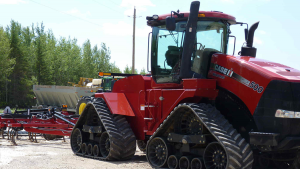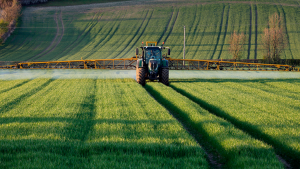Field observations
SPRING 2022

June 16, 2022
Heat and adequate soil moisture has fueled the growth and development of all crops this week. Some areas are seeing variable field conditions depending on how much rain has recently been received.
Corn
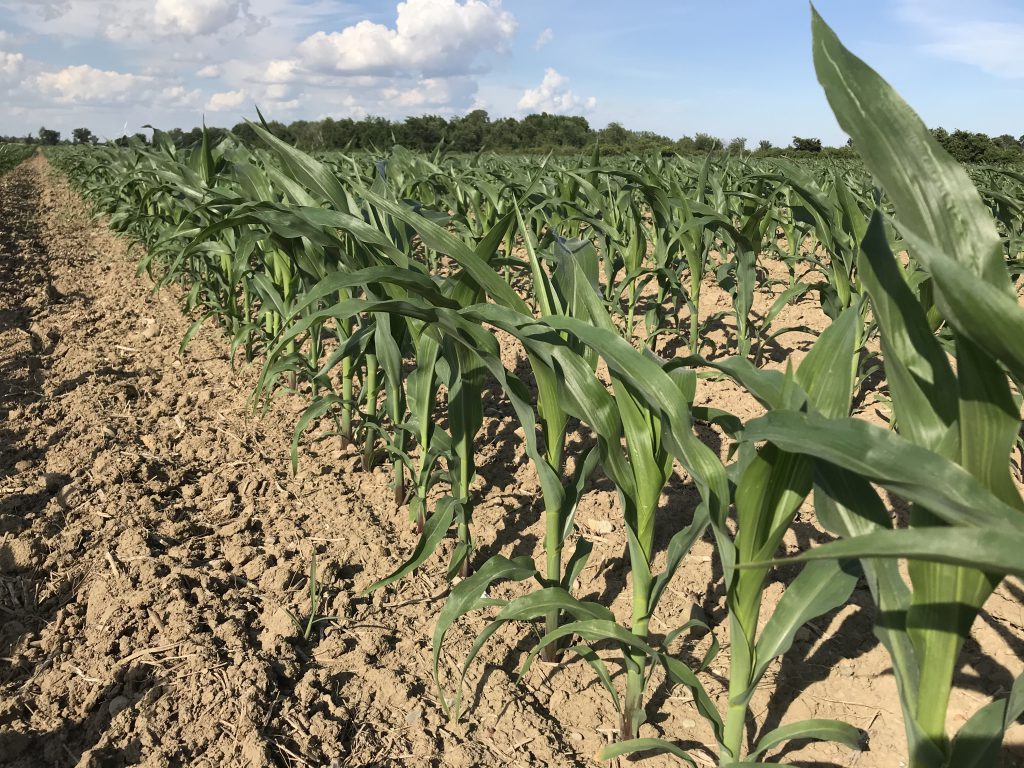
Crop development is occurring rapidly, with heat units accumulating quickly. Lots of corn is between the V3 (4-5 leaves) and V6 stage (7-8 leaf). V stage refers to the vegetative stage with the counting of collars on the corn stalk. At the current stages, side dressing occurs when field conditions allow in between rains. From V6 to V10, the corn plants will be developing the ear, and at this stage, kernel numbers per row and rows per cob will be determined. Stress in the upcoming weeks from lack of nutrients or moisture will reduce grain potential through reduced kernel numbers.
As corn plants are developing rapidly, plant variability is showing up as evidence of compaction damage from tillage or planting when conditions were too wet. This could be seen as smaller plants, discoloured as purple or yellow as root development is limiting nutrient uptake due to damaged soil.
The province has received consistent rains and rainfall up to this point, along with ideal temperatures for tar spot development. If it does begin to develop, the identifiers may start showing up in the first couple of weeks of July. There are still some variables, but if weather conditions continue with high humidity and leaf wetness, it will encourage the development of the disease. Disease progression will continue depending on the weather received. For more info on tar spot and to see what to look for, read our Agronomy Alert.
Black cutworm is causing some problems in various regions of the province. Fields which did not have insecticide-treated seed or do not have Bt hybrids containing Cry1F or Vip3A should take priority for scouting. Learn more about what to look for in this Field Crop News article.
Soybeans
Soybean staging is up to the 2nd trifoliate in many areas. Some soybeans are struggling in areas that have had very heavy rains after planting, creating crusting and causing slow emergence. In other areas, soybeans were planted deeper (2 plus inches) to get to moisture and have struggled to emerge, with delayed emergence.
Be on the lookout for insect pressure, especially on fungicide only or untreated soybeans.
Cereals
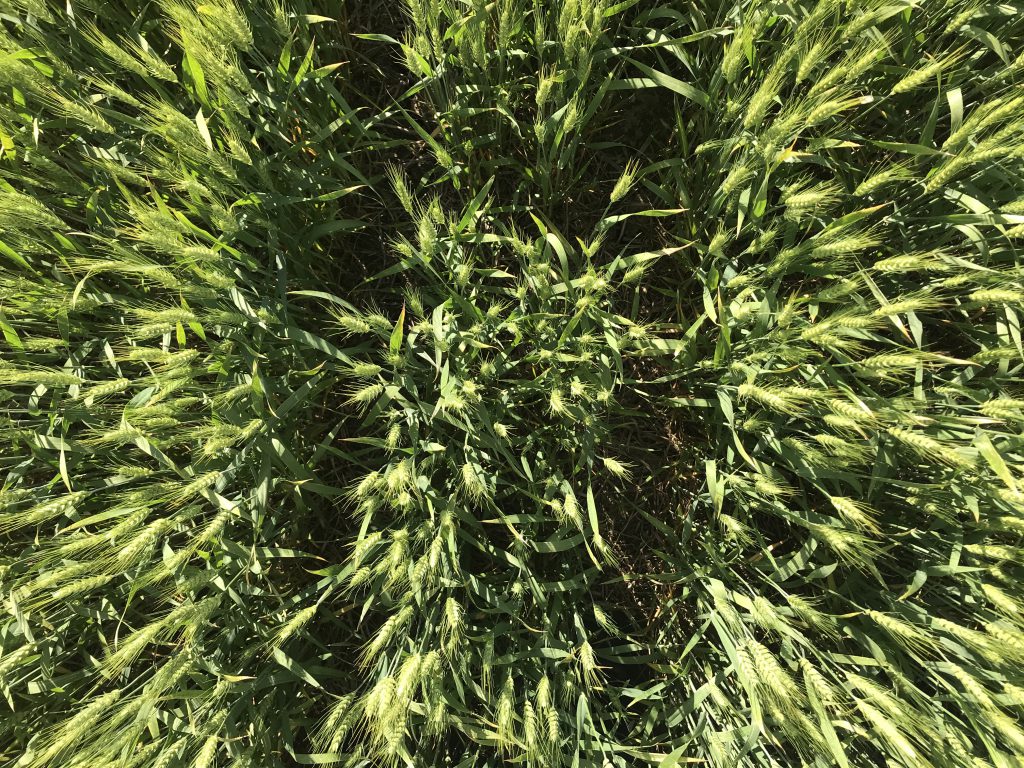
Overall, cereal disease is limited. Standability seems good so far in most areas. However, some are seeing some lodging in fields that had high nitrogen (N) rates or in those that had received manure that is traditionally high in N.
As temperatures increase, crop development speeds up. The average temperature range of 19–22 °C is the optimum for anthesis and grain filling in wheat. The high temperatures occurring and expected will impact grain fill. High temperatures also mean high water needs. In general, much of the province has a good supply of moisture in the soil, but this may be tested in the coming days if timely rains do not occur.
The spring seeding deadline for Agricorp for the northwestern area of the province ended on June 16, 2022. There was some ability for planters to get rolling in between heavy rains. However, field conditions for planting were not always ideal, and in some cases, heavy rains after planting will impact emergence and yield.
June 9, 2022
Heavy rains across a wide area have halted fieldwork this week. Planting is almost wrapped up as spring edges towards summer. Many are waiting for drier conditions to continue nitrogen applications in corn and weed control in soybeans. Cereals are receiving fungicide applications as this wet weather promotes an ideal environment for fungal growth.
Corn

the growing point is still below the soil surface.
Corn is off to a great start this year. The growth stage for much of the crop is between 5 to 7 leaves (V4 to V6 collar). The corn plant has been developing the nodal roots under ideal conditions this year (warmer soils). Before the nodal roots were developing, the plant was dependent on the support from the seminal roots and kernel. Uneven plant development in the field at this stage could be caused by damage to the seed kernel reserve and seminal roots. Things that might cause stress to the young corn plant’s root development are salt injury from fertilizer, herbicide injury, seedling disease, insect feeding, compaction, and very wet or dry soils. Ideally, nodal roots will tap into the starter fertilizer band and use that nutrition for optimum development and will be growing rapidly in the coming weeks.
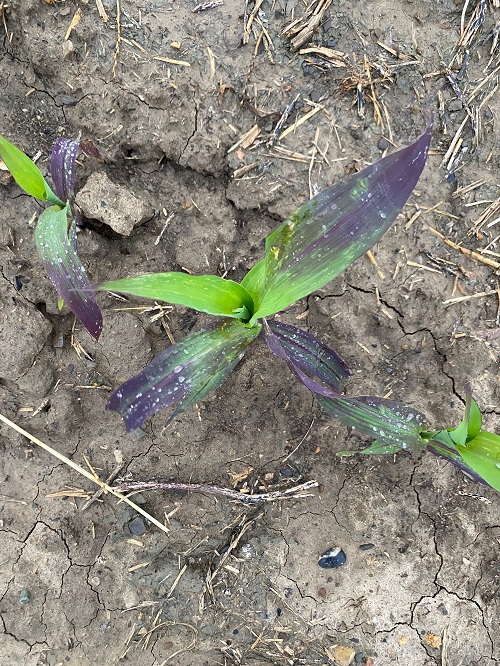
Some farmers might notice some purpling of corn plants in fields at this time. As with most things, there is an environment by genetic interaction, meaning some corn hybrid genetics will show more purple than others. This is due to the genes in some corn hybrids for producing anthocyanin pigments. Under early season stress conditions and poor root growth, the plant builds and expresses the purple (anthocyanin) pigments. Purple corn can also be caused by phosphorus deficiencies from restricted root growth due to soil compaction like sidewall compaction in the seed trench from planting in wetter soils. Even though many acres were planted in great conditions this year, compaction can still be found as some soils were just not quite ready when the planter arrived. Corn usually will grow out of the purple state if it has enough available soil phosphate once the weather warms up and growth resumes. Typically, no yield loss will be seen if nutrients have been applied at proper levels.
Corn rootworm trapping took place last year and allowed farmers to be more aware of the regions and fields where pest activity may require further scouting and monitor for potential resistance issues. Trapping will again be taking place this year. Find out more about the trap network and sign up for trapping. Grain Farmers of Ontario is a funder of this province-wide trapping program.
Soybeans
Soybean planting is 95 per cent completed, with soybean stages anywhere from just emerging to the 1st trifoliate. It has been noted that some fields planted into soybeans are slow to emerge, while others look incredible. It is a good time to check plant populations. Soybeans can compensate for lower stands (i.e. 90,000/acre on a loam, 110,000/acre in clay); however, with the late calendar date and the price of soybeans, this may impact some management decisions this year. Thankfully, a good rain, which many received this week, should help with emergence.

There has been some bean leaf beetle pressure on early emerged fields. This is a good reminder that rotating crops is important, as many are showing up in second-year soybeans.
Cutworm and wireworm are causing damage and lowering plant populations in some areas, causing replants in some fields. Be sure to scout and do stand counts while assessing the size of the pest to determine if corrective action will need to be taken (if the pest is too large, it will be hard to control).
Some beans are showing injury from metribuzin – it is rare that yield loss will occur in this situation. Injury appears as crinkling of unifoliate and/or trifoliate leaves depending on when uptake occurs. Injury is often due to heavy rains falling after application, activating the herbicide. Sandy soils and fields with low organic matter would be the areas that could really show injury. Different varieties will show injury more, as will cultivated over no-till.
Some regions are having a hard time getting timely weed control completed. Soybean and corn herbicide applications have been happening simultaneously, combined with rain delays and high winds.
Cereals
Lots of T3 timing occurring in the past week and will continue as field conditions allow in winter wheat. In some areas, wheat has headed out earlier than what might be considered normal as it was in the ground early.
Overall, foliar disease pressure is low this year in cereal fields.
Spring cereals are currently being sprayed with herbicides for weed control. Overall, spring cereals are progressing well.
June 2, 2022
The fields heated up this week – a lot of soybeans were planted after a warm, dry weekend. Summer-like weather has dried the soil and seedbed, but the Wednesday showers landed where they were needed if you were lucky.
Green hues are starting to take over the fields as the crop emerges and develops quickly with the summer-like weather earlier this week. With maximum daily heat unit accumulation, we see plant growth rates three times greater than average. What used to take 10 days to develop takes a little over three days with these warm nights and hot days. As the crop advances quickly, farmers may miss the window of application or sampling.
Corn
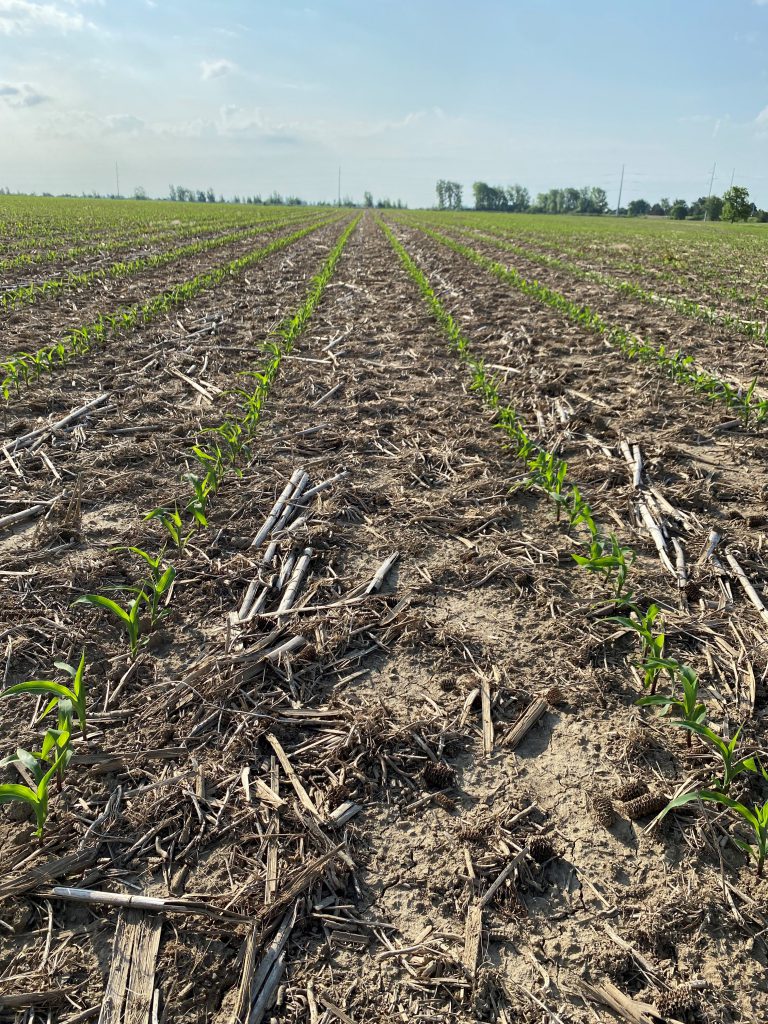
The last few remaining acres were planted in the recent dry spell in southern Ontario. The majority of the corn is in the 3 to 5 leaf stage (V2 to V4). Weed control has been critical as this is the weed-free period of the crop’s life; any competition will influence crop yield.
The next operation in many of these corn fields will be side dressing of nitrogen (N). Those with little to no nitrogen applied will be looking at side dressing soon, while those with N applied with starter or preplant will be applying in a few weeks when the crop has a higher demand for nitrogen. At the V3 stage, the kernel reserves are starting to dwindle, and the corn seedling will need to switch over to relying on the nutrients delivered through the nodal roots. Any delay in the switch to root feeding can impact the plant’s growth.
Soybeans
There were lots of soybean acres planted earlier this week in southern Ontario. Hot, dry weather has dried the soil to allow planting but has also caused the possible concern of a dry seedbed. Soybeans planted into moisture will be in good shape, but under these hot conditions of 30 degrees Celsius, the seedbed continues to dry depending on soil type. Fields should be checked two days after planting to see if the seed has imbibed moisture and if germination has begun. Continual hot weather without rain could dry the seed up, killing the germination and resulting in reducing plant stands. If there is patchy emergence next week, consider the planting conditions and the soil’s variability to hold moisture and check seed for viability.
The Northwest remains wet, and planting has been limited to high ground or tile-drained fields. The crop insurance deadline in the north was May 31 for soybeans.
Planting is nearing completion; some areas have been done for a week, and others may be 50 per cent complete. An estimated 90 per cent of the acres are planted at this time, with a few more acres left to wrap up seeding for the year.
Cereals
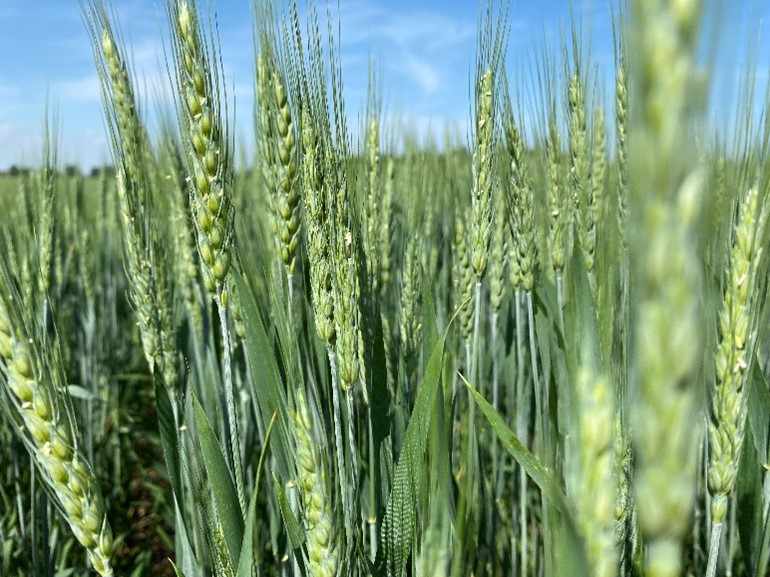
Winter wheat heads shot out of the plants in Southwestern Ontario early this week. Many fields hit anthesis (GS61) while farmers were busy with soybean planting. Some fungicide applications have been accruing, but the ideal T3 spraying window is closing fast as this heat has driven pollination at a rapid pace. What usually takes three days is happening within a day as we are getting 30 CHU per day with 30-degree days and warm nights. Cooler weather later in the week should slow growth and allow the north and east of the province to have a normal application window.
May 26, 2022
Heavy rains, high winds, and power outages across many areas of the province halted planting over the long weekend. Cleanup is ongoing after the derecho, with many farmers still needing to plant soybeans and apply weed control programs. As pockets of drier conditions occur, many farmers are planting as opportunities appear. Unfortunately, planting is going to drag into June this year.
Corn
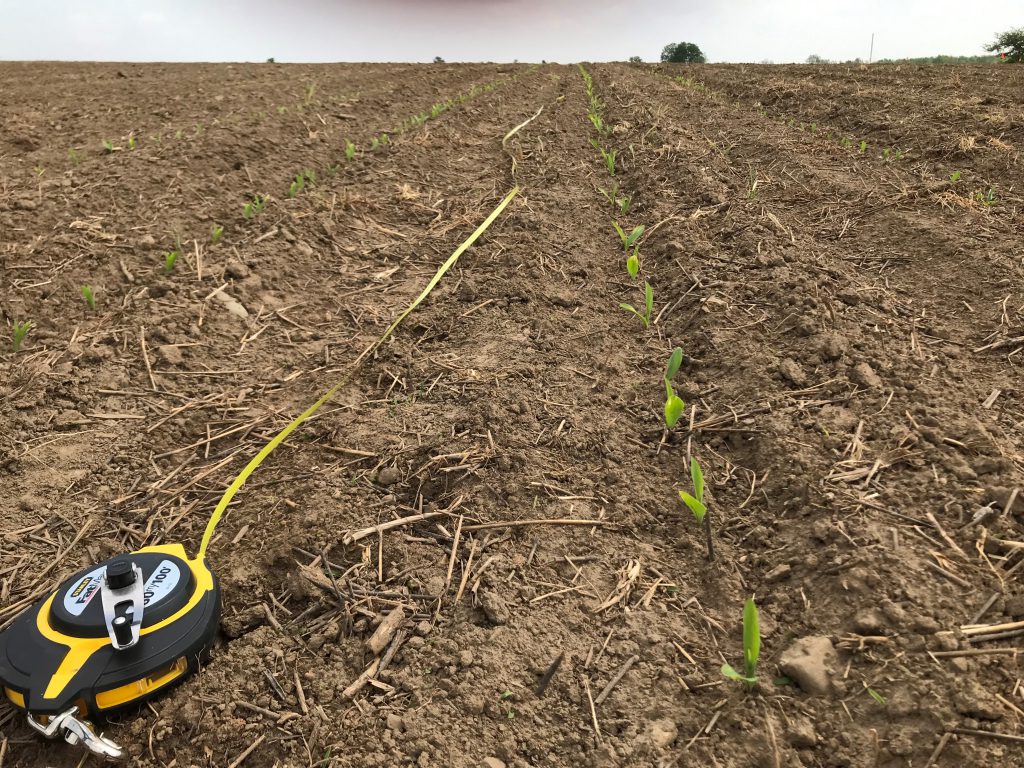
Corn staging across the province is from just emerging (VE) to the 3 leaf (V2) stage. Corn planting is over 90 per cent complete, with the remaining acres awaiting dryer conditions or harvest of forage crop before planting wraps up.
As corn emerges, it is a good time to do stand counts. Using a tape measure on 30” rows, measure a length of 17’5”. Count how many plants are emerged. Multiply the number of plants in the measured area by 1000. This will give you the final plant stand.
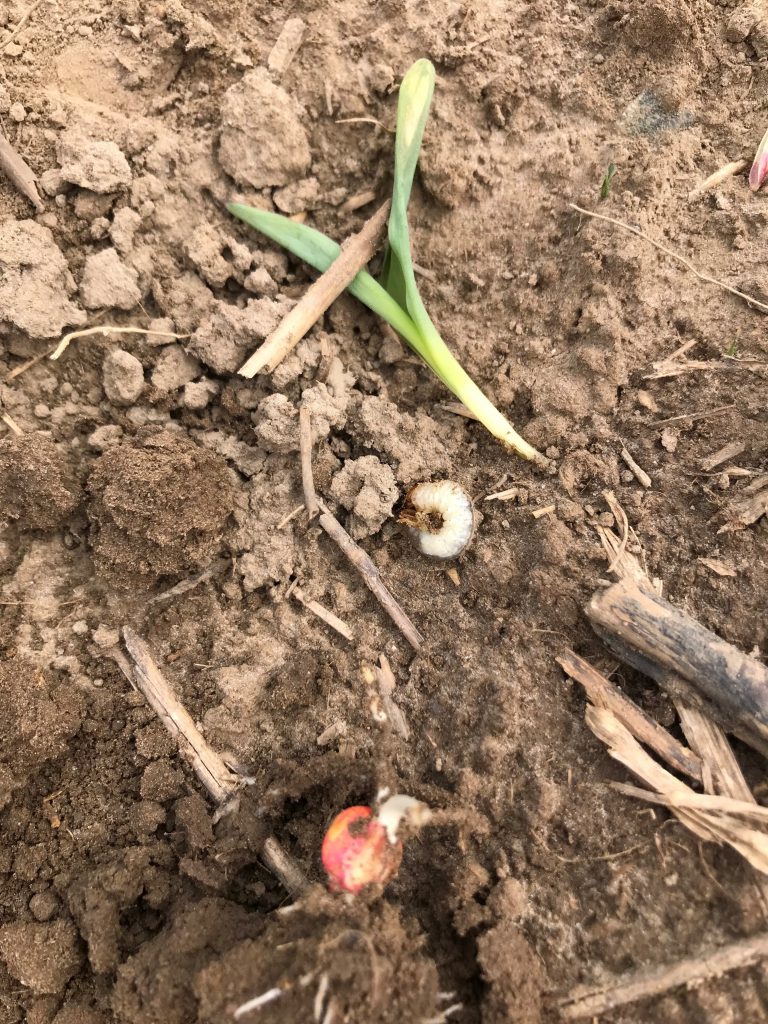
Many things can affect plant stands. Planting into cold, wet conditions can cause delayed emergence and reduce plant populations due to seedling rots, insect feeding and seedbed compaction. Planter set up with too much down pressure on the closing wheels can make the seedling work hard at emergence and cause the seedling to leaf out underground, emerge late, and look like a corkscrew. Heavy rains after planting can compact the soil and make it difficult for the plant to emerge. Adjusting the planter to the conditions of each field is important to maximize emergence.
There can be emergence variability across a field. Many different causes could create emergence concerns, including differences, moisture, temperature, soil structure, etc., and insects feeding in a grassier area of the field or edges of the field. A variety change could also be considered.
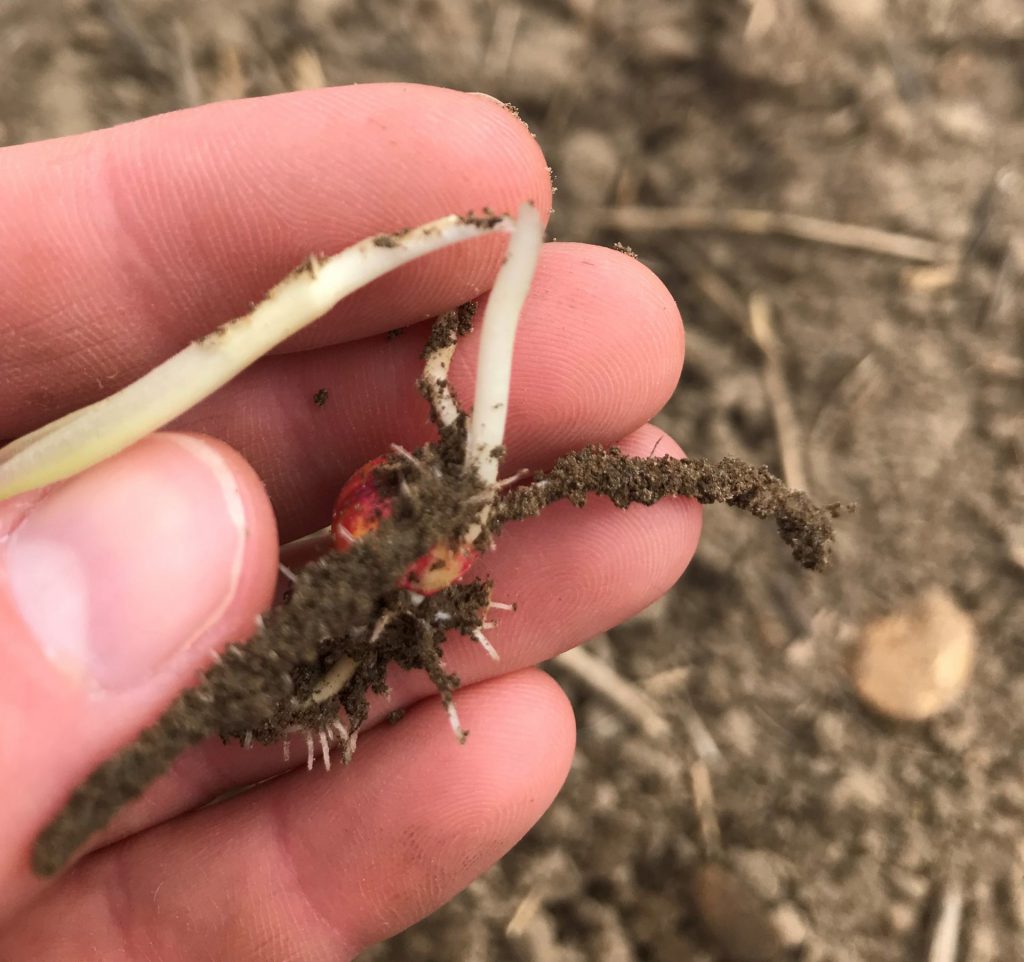
If stand counts are poor enough, it might, in some cases, be worthy of replanting. But many options require a plant back interval which would need to be considered. Read more in this Field Crop News story: How to remove a poor stand of corn before replanting.
Soybeans
Soybean planting across the province is variable, with 30 to 100 per cent complete. Planting progress differs depending on the soil type, tillage, and rainfall variability across the province. Soybeans planted into ideal conditions earlier this month are emerged (VE) to cotyledons stage (VC).
As plants emerge, it is a great time to assess plant stands. Poor stands can be caused by seed rots, herbicide injury, insect issues, and planter issues (seed depth, compaction, etc.) A common way to do soybean stand counts is to use a hula hoop. For example, using a hula hoop that is 32” in diameter, toss it randomly in the field. Count the emerged plants and multiply by 7800 to get the estimated plants per acre.
Soybeans need a lot of push to emerge as they have to unhook with the cotyledons. If there are some concerning fields, check stand counts by taking physical counts and evaluate the stands for uniformity. This chart can help estimate your final yield potential based on uniform stands depending on your conditions.
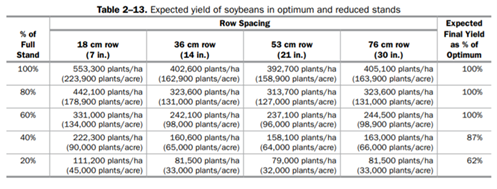
Don’t be caught off guard for pre-emerge herbicide applications, as soybeans are up and growing and therefore limit which herbicides might be sprayed. Speak with your agronomist for other options if soybeans are close to emerging. A good rule of thumb after applying a pre-emerge is to set a calendar reminder for seven, 14, and 21 days after application to go and scout fields to see if the pre-emerge worked or if a rescue treatment is needed.
Cereals
Oat, barley, and spring wheat planting is just about wrapped up in many regions. Northern Ontario still has some planting to do but is limited by the weather as some areas are affected by the spring floods.
Winter wheat is at the flag leaf (GS 39) to swollen boot (GS 45), with some very advanced wheat along the lake being at the flag leaf sheath opening (GS 47).
T2 fungicide applications are occurring, and the timing for T3 fungicide is rapidly approaching. Fungicide applications for fusarium suppression will be heavily dependent on weather patterns at the time of flowering. Remember to clean the sprayer out thoroughly before spraying the wheat. You have gotten the crop this far, don’t let tank contamination damage your wheat crop.
May 19, 2022
After a busy sprint last week, most of the corn acres have been planted across the province. Some areas in southern Ontario received rain over the weekend and the beginning of the week. Rainfall was mostly welcomed as soils were getting dry, but some areas received upwards of four inches of rain which was a little unnecessary. Memories of 2021 isolated downpours are coming to mind.
Corn
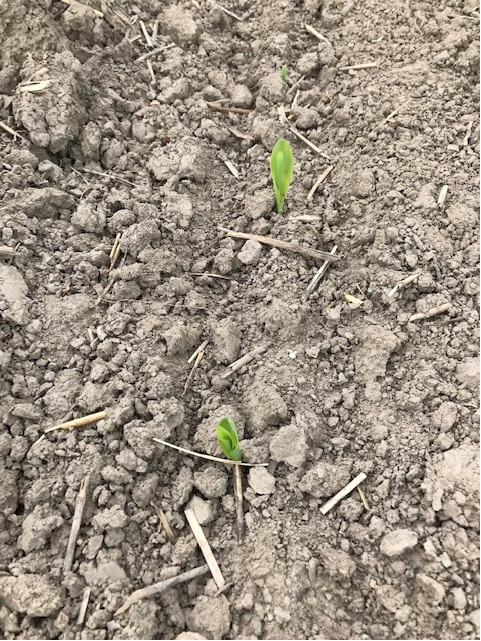
Planting progress has slowed this week with rain delays. Sixty to 90 per cent of corn acres have been planted, with some farmers finished and some just getting a good start. With the warm temperatures, some areas have seen corn emerge within seven days. Fields that were planted in loose, finely textured seedbeds and have received heavy rains after seeding should be monitored for crusting. Breaking the crust will allow seedlings to emerge and prevent leafing out underground, causing a reduction in plant stands.
Cool nighttime temperatures were experienced at the beginning of the week. Cooling soil and seed at this time will slow down emergence. Damage to seedlings will only occur once the growing point has emerged from the soil level and is exposed to freezing temperatures long enough to kill the growing point. The growing point does not get above the soil surface until the 5th leaf stage, also called V4 for the four exposed leaf collars.
As of Monday, May 16, the accumulated corn heat units (CHU) in Elora since May 1, 2022, were at 207.24 compared to the historical average of 146.97. Last week saw large jumps in CHU accumulation with the warm weather (20+ CHU per day). Corn requires approximately 180 CHU to emerge.
There has been some corn planted in the New Liskeard and surrounding areas. Over the past couple of weeks, exceptionally nice weather for the region has allowed for good planting conditions and quick emergence.
Soybeans
Soybean planting is well underway, with 25 to 40 per cent complete. Yield for corn or soybeans is determined not just by the calendar but also by the seedbed conditions. Pushing planting in unfit conditions sets the crop up for early stress and limits root development, preventing moisture and nutrient uptake by the plant. Remember, soybeans need to push their cotyledons out and planting at 2.5 inches or deeper will not work as hypocotyls have limited extension. Before running into dry seedbeds, consider field practises that conserve moisture by reducing the number of tillage passes or depth of tillage. If there is a need to till, firming the seedbed will also conserve moisture. If searching for moisture and planted deeper than 2.5 inches, plant stands will be reduced.
Cereals
There is lots of progress in the wheat with the exceptional heat and sunshine. This week, many herbicide, fungicide, and plant growth regulator (PGR) applications have been completed. Wheat staging across the province can be seen anywhere from stem elongation (GS 32) to flag leaf (GS 39).
Some powdery mildew can be found in some thick, advanced stands. Powdery mildew is a leaf disease that reduces yield and grain quality. The disease can be stubble borne but can also be carried over in volunteer wheat. To manage this disease, plant more resistant varieties, control volunteer wheat, rotate crops to avoid stubble-borne infection, manage nitrogen, and utilize foliar fungicides.
Remember to check the staging of wheat when making any applications, as some fields will now be getting close to flag leaf. T2 fungicide applications will be occurring soon. T2 applications occur at the flag leaf stage before the head emerges from the boot.
In some early planted wheat, T3 timing will follow T2 timing within a short timeframe. T3 timing is at heading during flowering and helps limit fusarium infections.
In the far northwest, there have been a lot of delays due to wet weather. Few acres have been planted into spring cereals or other crops. There has been lots of cool weather and rain, from one extreme (drought last year) to another.
Farther to the northeast and southern northern regions are seeing better conditions, with many acres being planted. There was frost earlier this week, and cooler damper weather is expected again. This will slow down the planting and crop development, but planting has been off to a good start.
As planting rolls on, remember to keep safety as a priority.
May 13, 2022
Warm weather and sunshine have allowed planters to get rolling across most of Ontario. Many acres of corn and some acres of soybeans have been planted into almost ideal conditions.
Corn
This past week, planters have been rolling across most of the province, where the soil was fit. Roughly 50 to 60 per cent of corn planting is complete.
After lots of moisture earlier this spring, fields have dried up very quickly, especially if they have been cultivated a time or two. As the ground dries up, make sure that corn is planted into moisture. Many fields after tillage are being rolled to try to keep the moisture in the soil. Another way to help conserve moisture is to ensure that tillage depth is not too deep if the ground is being worked.
Herbicide and nitrogen applications will be ongoing as they are able.
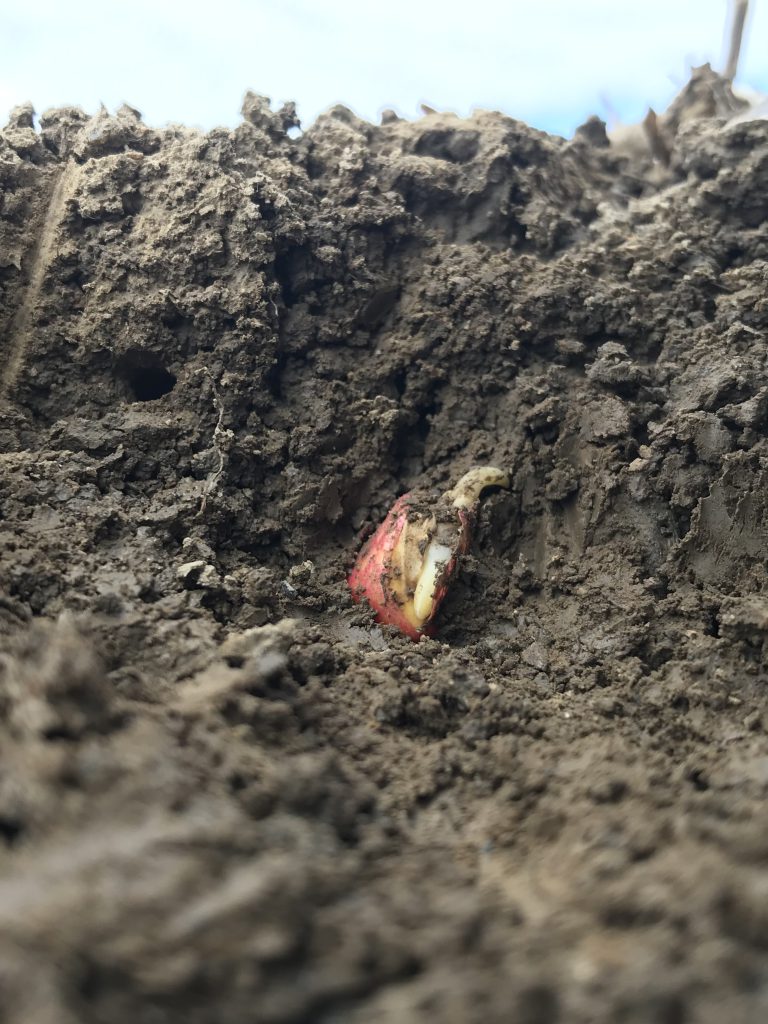
With warm weather, corn heat units (CHU) are accumulating quickly, and corn seeds will be germinating and emerging. If planted this week with maximum CHU accumulation (30 per day), the corn could be out of the ground in five to six days, and that is a lot less time for insects to be active. It is not time that gets the crop out of the ground, it is the heat that drives the enzymatic process to get the seed to germinate, and the continued heat encourages cell growth of the developing plant seedling.
For best corn yields, U.S. corn specialists say that if the crop emerges uniformly within a 12 growing degree day (GDD) (~20 CHU window), you will be able to maximize the crop by having a picket fence stand. A great way to evaluate your emergence timing is to use the flag method – planting flags beside the plant as it emerges. Start by measuring 1/1,000 of an acre; that way, you are also doing a population count at the same time. On the first day that you can see corn spiking through the ground, place a small flag beside all the emerged plants. Come back in 20 CHUs and place a different colour flag beside the newly emerged spike for that day. Keep doing this until all the corn has emerged. Be sure to use a different colour flag on different days or label each flag with the emergence date. Also, do the flag test on each row of the planter. If you find poorer or delayed emergence on a particular row, it may be related to planter setup issues. This test is also great for evaluating different planter settings (deeper or shallower) or different attachments. Visually, the row emergence may look the same, but once you start counting the plants in 1/1,000 of a row, you will be surprised at what you learn.
As the season progresses, pay particular attention to your flagged corn plot. See if the later emerged plants are weaker and smaller. Did they pollinate later? How was the ear size or cob fill? Does emergence timing make a difference on your crop?
Soybeans
Soybean planting has also begun, on ground that is fit, with roughly 25 per cent complete.
If soybean planting progresses and it remains dry, it is important to plant into moisture. The ideal planting depth for soybeans is around 1.5” to 1.75” with adequate soil moisture. If soil is drying out or seedbed uneven, seeds may need to be planted around the 2”- 2.25” if on lighter soils, but only if moisture is limited. Remember, soybean hypocotyl reach is limited and can only extend that two plus inches. If conditions like crusting occur, deep planted soybeans will not be able to push and extend the distance. Loose, dry soil may be the exception for the 2” plus depth. There is still lots of time to plant soybeans, so some growers may choose to wait until the seedbed receives some rain and then plant when conditions are better.
Cereals
Many spring cereal fields have been planted. However, there are still more acres to go in the ground in Northern Ontario and other regions of the province as weather and time allow.
Winter wheat that has received nitrogen looks spectacular in many cases, with some wheat now at Growth Stage 32 (second node detectable).
Be safe!
As planting progresses, remember that safety is key. Many accidents and mistakes can occur when overtired.
May 6, 2022
Rain across the province has many at a standstill for a few days yet, depending on rainfall amounts. Before the rain, limited acres of corn were planted and some soybeans, with many more acres yet to be planted as field conditions dry up. Northern Ontario is drying up and will see some fieldwork begin shortly.
Cereals
Early planted winter wheat has reached growth stage 31 (feekes 6/ first node). The warm weather that is expected will encourage rapid development. There is a large difference in wheat staging across the province, and it is important to know what stage it is at for applications of herbicides, fungicides, and plant growth regulators (PGR). A simple way to stage wheat at this stage is to feel the base of the main stem for crushing and move up to feel the nodes. Find out more on staging.
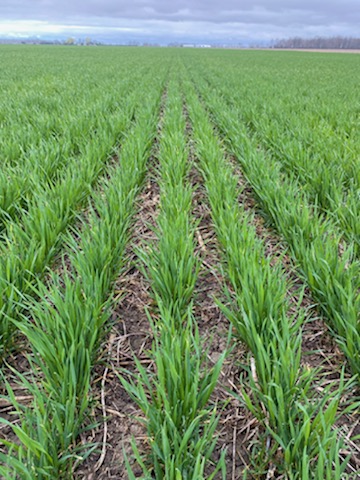
As the ground firms up, many will be looking towards applying a PGR on their high management wheat, or wheat that may have received a lot of nitrogen (N) from manure. For a reminder on what PGRs are available and how they work, along with the appropriate application timing, read this Ontario Grain Farmer article.
Second applications of N will be ongoing once fields dry up, as will applications that include those who are just applying one application. It is looking quite good in many areas where wheat has had N applied. However, it is always important to take a walk into the field to accurately assess. Some areas are still working on writing fields off due to winter kill and heavy water damage.
Weeds are growing in winter wheat, especially if they were not controlled last fall. Large dandelions are present, along with fleabane, chickweed and a host of many others. There are a number of good options for control in wheat. If a herbicide was applied in the fall, there might still be a flush of weeds in the spring. Control weeds when they are small and manageable. Be sure when applying herbicides to follow the “Rule of 3”: three days above 3 degrees C (the day before, day of and day after spraying). And keep in mind the more products in the tank, the higher the chance that there may be adverse effects on the plants. Always read and follow the labels of any products that are being used.
Corn
A few fields have been planted where soil temperatures and conditions have allowed. Once things dry up, there will be a push to get corn planted. There has been some ground worked in preparation for planting.
As conditions dry up, ensure that fieldwork and planting aren’t being “rushed.” Ensure that ground conditions are fit for planting. Seedbeds that are too wet when planting occurs can cause emergence issues, root growth issues and, in turn, yield losses.
A key thing to remember when planting corn is weed management. Corn can lose 1 to 3.5 bu per ac per day when weeds are present due to competition of resources and structural changes of the plant. Targeting weeds at emergence and when they are small using multiple modes of action are important keys to management.
As planting ramps up, remember to stay safe.
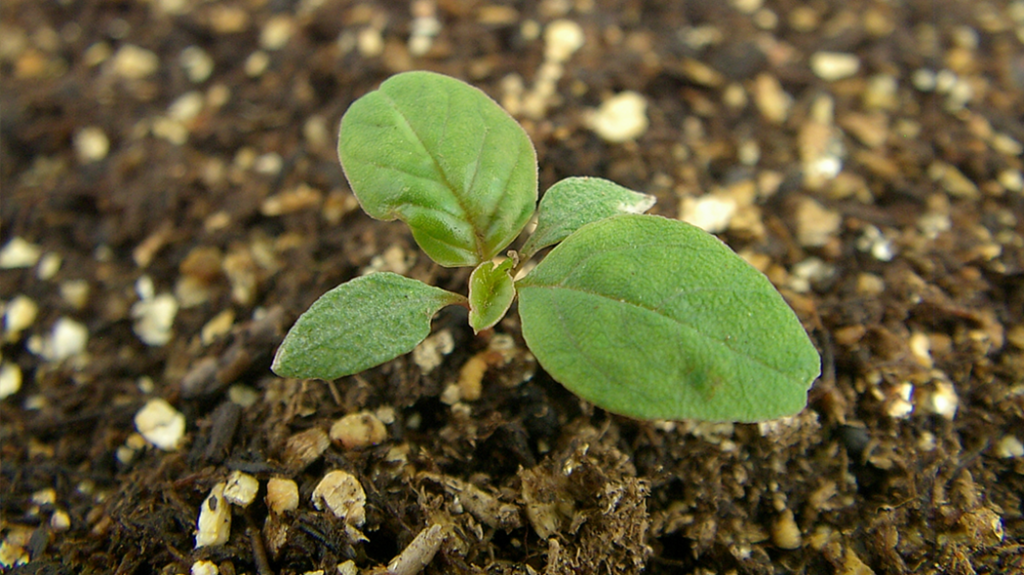
Waterhemp
Now is the time to get out and scout for weeds.
A very troublesome weed and one that many don’t realize has shown multiple forms of resistance across the province is Waterhemp. Waterhemp can germinate and emerge throughout the growing season and has high seed production. How can waterhemp be controlled?
- Implement a two-pass herbicide program using residual herbicides with multiple modes of effective action.
- Proper identification is key. Once identified, proper equipment cleaning before moving from contaminated fields is highly encouraged to reduce the spread.
- Once harvest is complete, plant a cover crop. Cover crops will inhibit waterhemp emergence, growth and seed production. Grain Farmers of Ontario has created an Agronomy Alert on Waterhemp, which includes identification, locations of resistance and how-to programs for control of waterhemp.
More information on waterhemp biology, identification, and control.
Crop Insurance
Deadlines to enroll for crop insurance have been extended to May 16.
Find out more on the Agricorp website.
April 29, 2022
Snow, rain, and some nice weather have been seen across the province this past week. It’s hoped that the weather remains favourable in order to get some fieldwork and planting done in the coming week.
Cereals
There are some incredible-looking winter wheat fields across the province and some that are still struggling to decide if they will stick around. The first shot of Nitrogen (N) has been applied on some winter wheat fields, with more fields seeing N application when fields become fit. The fields that have received a shot of N are mostly looking really good and have responded to the N application. Saturated soils have compromised some wheat fields with poorer stands from rot and frost heaving; tile run wheat is evident. As May approaches, the timing of split N applications gets condensed, and many farmers will switch to one N application due to the compressed season. From a growth stage point, wheat is not behind, but some farmers think that there won’t be a lot of time later in the season to get on the second pass.
September planted wheat can be found to be at GS30 in some areas of the province, which means it is almost at plant growth regulator (PGR) staging (roughly the next week or two – maybe a bit more if cold weather remains as they are calling for). To learn more about whether a PGR is a good option for wheat, watch this video. Another source to look at which PGRs are available, and optimum timing is an article that Grain Famers of Ontario agronomist Laura Ferrier wrote last year. As PGR timing approaches, application is worth consideration when farmers are pushing N on intensively managed acres with some lodging potential.
T1 fungicide timing won’t be too far off. In general, there is not a lot of disease right now since the wheat doesn’t have a lot of canopy yet.
Some spring cereals have been planted when the weather has allowed, but many acres are still to be planted. Remember to check seed size and adjust accordingly for seeding rates.
Weeds
Waterhemp is a growing concern and is spreading across the province. Learn more about this troublesome weed.
Pests
The 2022 Great Lakes and Maritimes Pest Monitoring Network is up and running for the 2022 season. We are monitoring for black cutworm, corn earworm, European corn borer, fall armyworm, true armyworm, and western bean cutworm across the region. We are providing an interactive real-time map and trap data dashboard that summarizes the trap results by pest. Anyone is welcome to set up a trap and enter the trap data into the network. More information can be found in this Field Crop News article.
April 22, 2022
Although some years have allowed farmers to be starting in the fields by this time of the year, snow and rain have delayed this in many areas. It is not an early spring by any means, but not yet a late one either.
Cereals
Some spring cereals have been planted, but wet conditions have limited current planting progress. As soon as ground conditions become fit, there will be a push to plant.
Some Nitrogen (N) has been applied to winter wheat fields. However, in some areas, the wheat has just begun to green up with some warm weather and warm rain. There is still time for early nitrogen applications.
Corn
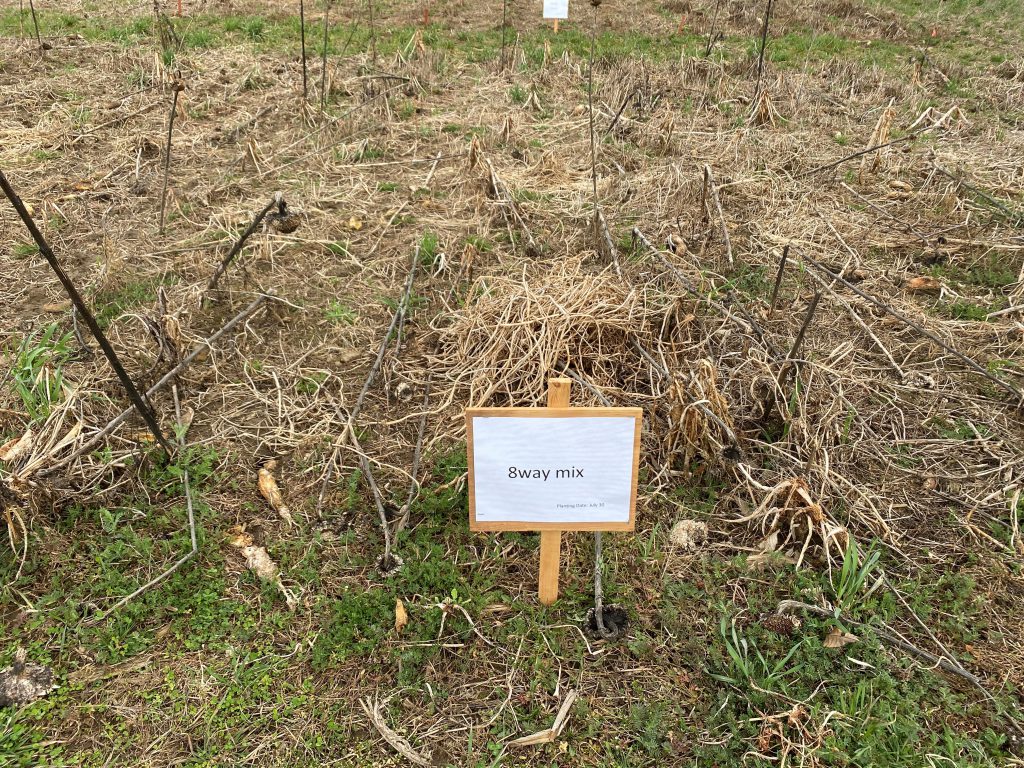
As planting time approaches, the question comes up: when should we plant? The key to establishing the crop’s potential is to plant it into a seedbed that can provide even and timely emergence. The soil needs to be fit (not too wet, not compacted, or lumpy) before planting for ideal emergence. The ideal soil temperature for planting corn is 10 °C to achieve uniform germination and reduce seedling stress resulting in corkscrewing and leafing out under the surface. When placed in the soil, the seed will absorb about 30 percent of its weight in water, and the temperature does not affect water imbibition much. However, this is different than radicle (root) and coleoptile (shoot) growth; their growth is correlated with soil temperature. In cold soil conditions (below 10 °C), seeds will readily absorb water but not initiate root or shoot growth, leading to seed rots and poor emergence. Recommendations are to begin planting when soils are near 10 °C, or the forecast is favourable for a warming trend. We have experienced cold conditions after planting the last few years, and colder fields, like no-till fields, experienced lower populations due to cold stress resulting in leafing out underground. Techniques to warm the soil or waiting until soils warm-up will help establish a better stand establishment with uniformity.
Being cognisant of soil fitness and temperature helps ensure that plants will be off to a good start this spring.
As spring approaches and there might be some questions still revolving around N requirements for corn, the Nitrogen Calculator is an excellent resource for N recommendations using grain and fertilizer pricing.
Soybeans
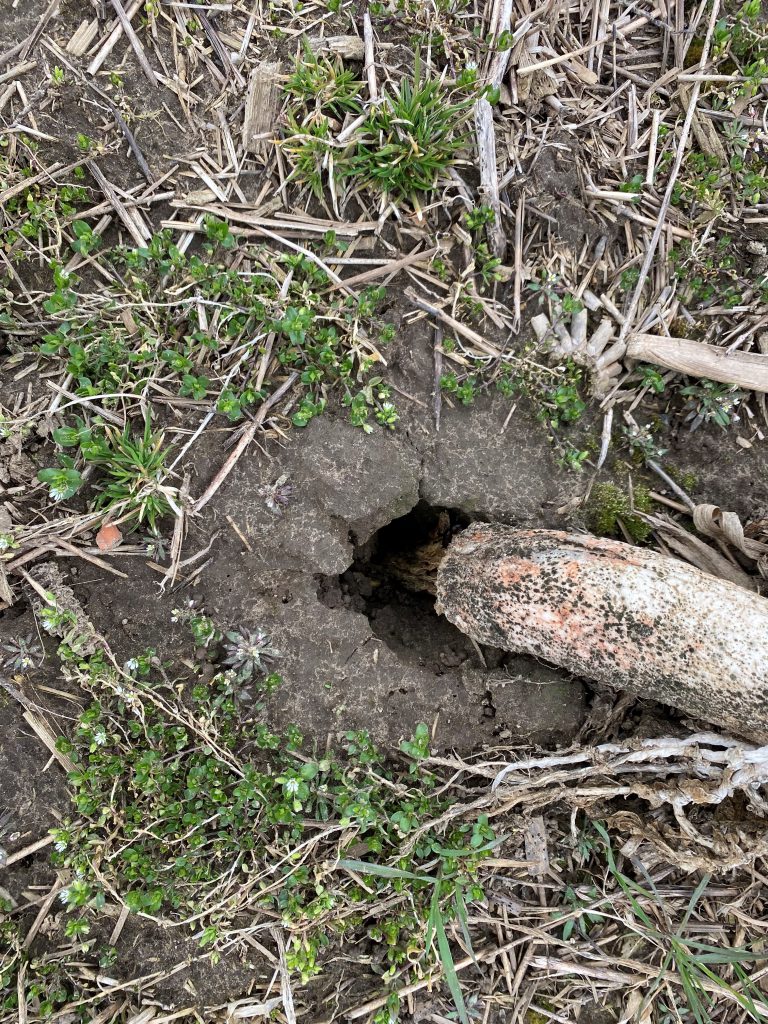
It is imperative to know soybean seed germination. As soybean planting edges closer and farmers are finalizing planting plans, something to consider is final plant stand goals and what planting population is needed to achieve that. Seed germination is one part of the calculation, as are planting conditions and weather after planting. The controllable factors today are knowing the germination rate and adjusting your planting population to adjust for any lower germination seed.
Due to poorer fall harvest conditions last fall, some soybean seed this spring may not be at the germination rate you have experienced in previous years. It would be wise to know the germination rate before you plant the seed so you can adjust seeding rates. For example, if you desire a 150,000 plant stand, you will need to drop 187,500 if the germination rate is 80 per cent. Also, adjust the rate based on seedbed conditions or if you have other concerns for emergence like crusting etc.
Seed tagged with a Canada Certified No. 1 seed tag will be 85 per cent germination or greater. Canada Certified No. 2 seed is 75 per cent germination or greater. Note: some companies may have greater internal tolerances, which decide which seed lots to sell. Of course, everyone wants to sell the best quality, but conditions last year may affect germination rates in different seed lots. A seed germination test is the best way of knowing, so asking the germination rate of your seed provider or getting a test done before planting will provide you with the knowledge needed to adjust seeding rates.
Schedule 1 to the Seeds Regulations Grade table 5 for Soybeans and Corn.
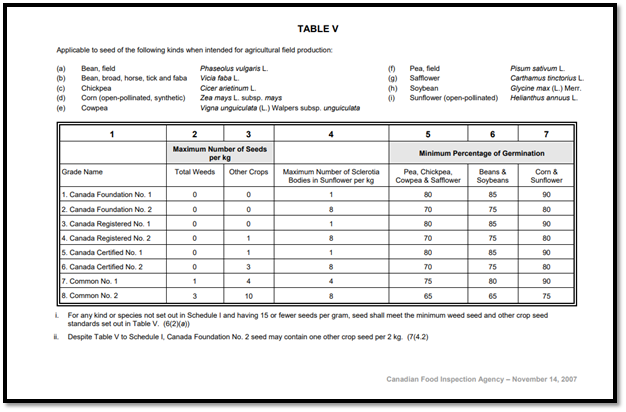
Bio Strip-Till Tour
The tour visits Niagara and Brant this week – join in person to learn about bio strip-tilling at the Ontario Bio Strip-Till Tour.




















